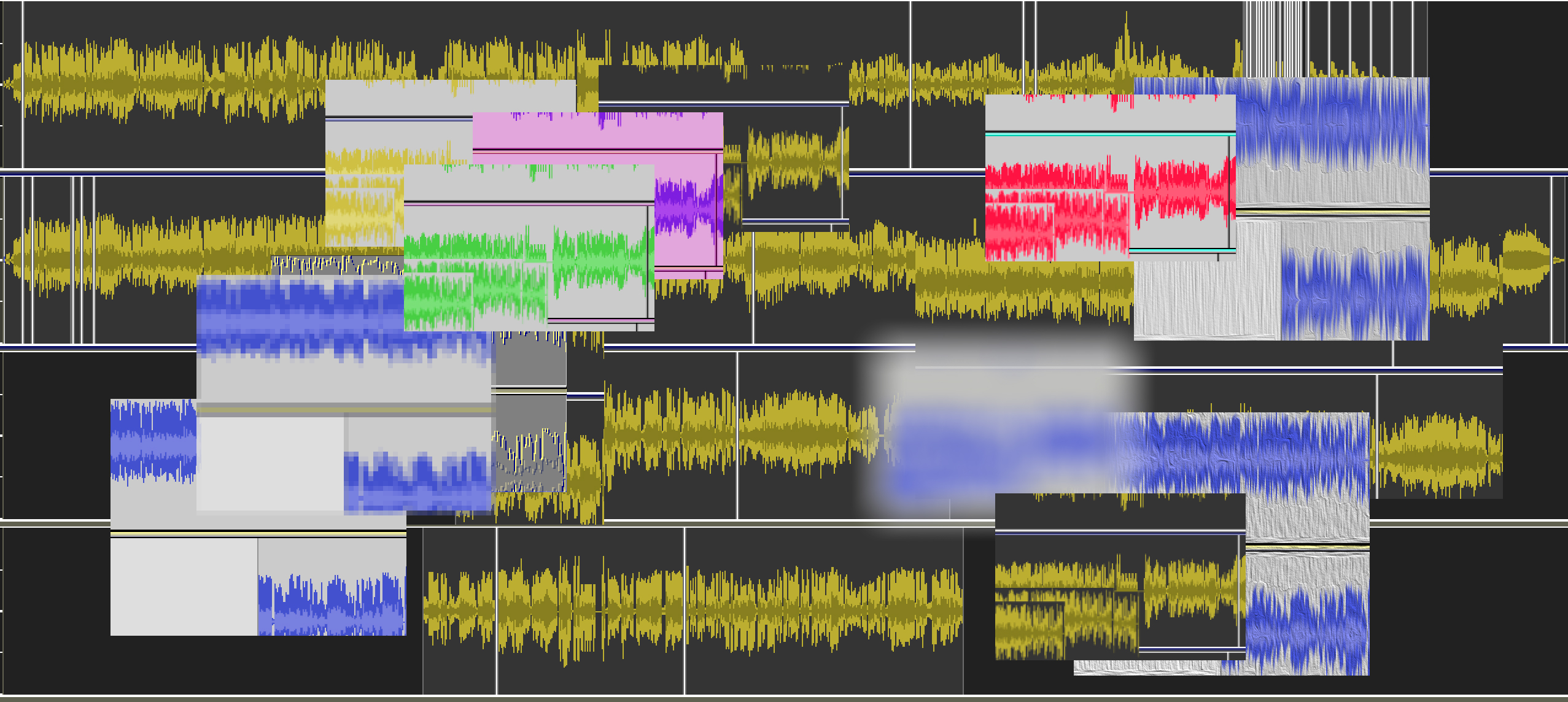
A new audio work, "Crazy of Objects (Veil) (1999/2014)," which overlays my 1999 Vancouver reading. 8 minutes and 22 seconds:
"Waveform Veil" overlays the waveform of the audio 4-track audio file.
Enzo Minarelli: " a touch of dada-simultaneism into a skilled capability of tuning an orchestra of sounds, which was unreachable for dada artist more devoted to noise and instinct nihilism, here there is your sense of rhythm, your profound duty of the sacred word, of course easy to mix up the parts of object-subject, the object of the poem becomes the subject and viceversa, until a final explosion of a reduced language to a chourus line facing the nothingness ... "
Michael Hennessey on PennSound Daily:
Over at Jacket2, Charles Bernstein recently posted a new audio piece, entitled "Crazy of Objects (Veil)," which, he explains, "overlays my 1999 Vancouver reading," creating a multifocal audio collage reminiscent of his 1970s tape constructs issued on the 1982 Widemouth Tapes release,Class, along with other contemporaneous experiments first issued by PennSound in 2009.
"Crazy of Objects (Veil)" runs eight minutes and twenty-two seconds, and is presented in two distinct versions — a stereo MP3 iteration as well as a 4-track WAV format — each of which employs cut-and-paste montage and overlapping, echo, reverb, pitchshifting, time stretch and various modulation effects to distort the source audio. "Waveform Veil," a complementary visual piece (shown above) "overlays the waveform of the audio 4-track audio file" in a mode similar to the aural effects employed in the track. Of course, while we're considering potential intertexts for this new piece, we should also mention Veil, a 1976 book by Bernstein, which achieves similar aesthetic goals through typographic means.
Last week I discussed the recent conclusion of Chris Funkhouser's Jacket2 commentary series, which revisits old practices and takes stock of the changes that have transpired since their first use, and here we see another perfect example of this phenomenon. Between the mid-70s tape machine-to-tape machine dubbing of Class and Berstein's Audacity-aided manipulations here, we can see the sometimes-glacial, sometimes lightspeed technological and cultural shifts that have taken place within our lifetimes.

